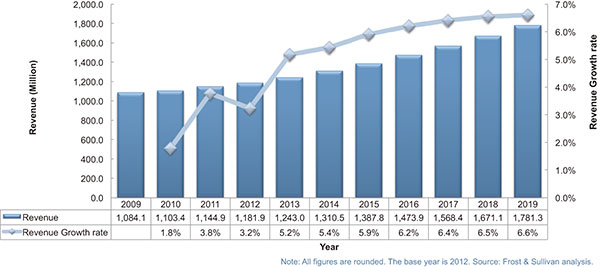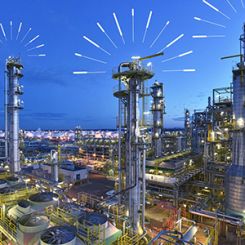The process industry continuously searches for versatile, easily deployable solutions that streamline pump controlling capabilities with feasible cutting-edge technologies. Because of the different types of volatile, toxic, valuable and hazardous fluids that are used during operations, end users must maintain an accurate, leak-free flow. This triggers the pump market to develop a technology that minimizes the physical contact of actuators and seals.
The tested technology that has been catering predominantly to the oil and gas, water and wastewater, and chemical industry is magnetic drive pumps. This new solution has operated within many dynamic end-user demands and among threats from different emerging solutions but has always performed particularly well in two critical aspects:
- Using magnetic actuation to push fluid through a micro channel
- Removing physical contact of a seal, making it sealless
Reliant upon the applications, magnetic drive pumps have found their place in three industry verticals because of the complexity of the target end users’ processes. The chemical industry and oil and gas sectors prefer to use these pumps because of the highly viscous and hazardous nature of the fluids.
 Total magnetic drive pumps market—North American revenue forecast
Total magnetic drive pumps market—North American revenue forecastGrowth Prospects
The key trend in the oil and gas industry is heavy instrumentation of field devices—upstream, midstream and downstream. This creates a strong foundation for magnetic drive pumps’ market growth.
To address this, gas exploration and production industries are expected to invest $350 billion per year from 2012 to 2019 to streamline their processes. This signifies that the magnetic drive pump market has high growth potential in the oil and gas end user vertical. Unconventional methods, such as bitumen production, are expected to double by 2018, and deep water production for oil and gas is expected to grow 20 percent by 2018.
Based on current scenarios—such as the shale gas boom in North America and the anticipated shale gas boom in China—the number of extraction wells will increase significantly. As a result, the number of pumps required will increase, in turn developing potential business opportunities for magnetic drive pump providers. Pipeline management for the midstream oil and gas sector will be the most lucrative option for magnetic drive pump providers to expand in the overall market. In North America, huge investments are being made in developing green field opportunities and in increasing upgrades of the existing architecture in the water, wastewater and power industry verticals.
Chemical industry operations involve handling hazardous fluids, putting the primary focus on the safety and accuracy of the fluid flow. The corrosive nature of the chemicals requires magnetic drive pumps that ensure reliability with better flow control. This provides another dimension to the magnetic drive pumps from a business growth standpoint.
From an emerging market standpoint, the medical industry is looking for more of this kind of pump, since accuracy and leak-free flow are the top criteria from a drug producing company prospective.
Technological Trends in Magnetic Drive Pumps
Magnetic drive pump technology is moving from a proprietary-technology-based structure to a more standardized and open-platform-based approach. This helps the pumps become more intelligent and easily synchronize with legacy and non-legacy process control tools.
Magnetic drive pumps have a prototype circular design that assists in continuous pumping by regenerating a ferro-fluidic plug at the conclusion of each pumping cycle. The intelligence lies in the flow rate control, which can be performed in two ways: adjusting the device dimensions and adjusting the velocity of an external permanent magnet.
The ferro-fluidic plugs in the magnetic drive pumps also function as valves, which helps maintain the pressure level of the fluid with no power consumption. The pressure level can be maintained by stopping the actuator, and if the flow must be reversed, this can also be accomplished by changing the direction of the actuator.
Conclusion
End users need more leak-free, accurate-flow pumps. Research and development is anticipated to focus more on this type pump. The shale gas boom will significantly increase chemical, water and wastewater production, which will require a growing number of magnetic drive pumps.

